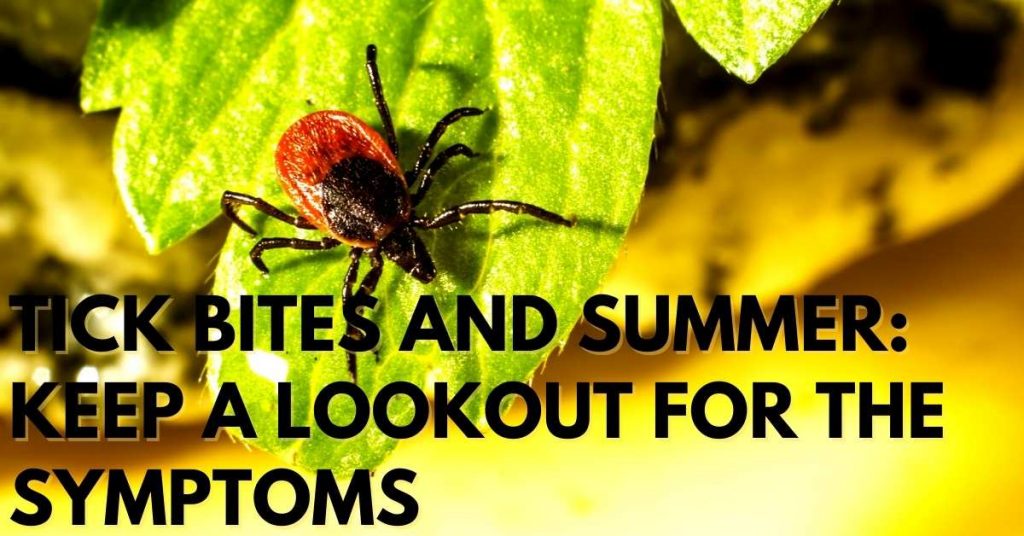
Are you going out to the beach or elsewhere this summer? It is essential to look out for ticks. Ticks such as Blacklegged Tick and Western Blacklegged tick are the vectors of Lyme disease-causing bacteria. According to studies, ticks are increasing in population around the United States, and it is crucial to stay safe during this summer.
How Likely Are You To Get Lyme Disease?
In the last 20 years, it has been estimated that ticks have populated newly in the Mid East, Eastern, and Northeastern States of the United States. According to some trusted sources, a person living in Northeastern states of the United States is 320 % likely to catch the disease.
The black-legged tick and western black-legged ticks are high in population in the states that include Minnesota, Virginia, Ohio, Oregon, Washington, Montana, Indiana, Iowa, Louisiana, Michigan, Nevada, Missouri, Alabama, Arizona, Georgia, Illinois, Kansas, Kentucky, North Carolina, South Carolina, Tennessee, Texas, Utah, and Wisconsin. According to the CDC, about 77 percent of the vector-borne diseases in the United States were caused by ticks.
What Are The Factors Affecting The Spread Of Lyme Disease?
Duration of the Bite: Make sure to check yourself and your children for ticks. Look at areas such as groin, hair, armpits. Most Lyme disease patients do not remember having a tick bite because it is tough for anyone to feel the tick bite.
Tick Enzyme: Tick releases an enzyme that makes it not painful for the host. Also, they do not easily fall off the host due to another secretion in their saliva. They burrow into the skin, making it hard for anyone to just remove it by brushing it. The sooner you find a tick, the lesser the chance of a tick bite.
Bacteria Transmission from Host– A tick feeds for 36 to 48 hours on a host so that they can spread the bacteria. This may lead to Lyme disease. So it is essential to check for ticks continuously this summer to prevent the spread of Lyme Disease.
Climatic Conditions – Climates with high temperatures and humidity are conducive for tick breeding.
How To Remove A Tick?
To remove a tick:
- First, take a close look at the tick.
- Then using a tweezer, hold the tick as close to the skin. Make sure not to apply too much pressure. As too much pressure may cause the tick to break.
- If any part of the tick is left behind, carefully remove it using a tweezer.
- Make sure to use rubbing alcohol on hands, tweezers, and the tick bite region. You may use soap and water in place of rubbing alcohol.
If the following symptoms occur, it is crucial to seek the help of a medical practitioner :
- If a bull’s eye rash occurs.
- Fever and joint pain.
- Pain along with swelling of joints.
- Head and Muscle ache
- Sleep disturbances
- fatigue
The rash to look out for :
- The rash called erythema migrans occurs only after 3 to 30 days after the bite.
- The rash may expand to 12 inches or larger.
- The rash has a red spot with a round shape around it.
- It may not appear in the same area of the tick bite.
- This rash may feel warm. In rare cases, it is painful and itchy.
- This occurs in 75% of the patients, according to the CDC. The absence of rash does not mean Lyme disease was not contracted.
Climate change and Lyme Disease
Studies have found that global warming directly impacts the pathogens and vectors of Lyme disease.
Studies revealed that
- Warming of the Earth has increased by reproduction and frequency of bites
- Decrease of the period of the pathogen incubation.
- These arachnids may increase in population in those uninhabited tick regions.
- Prolonged or rapid tick development
- Egg production increase
These ticks require high humidity and warm temperatures (85% Humidity and 45% Fahrenheit) to thrive and expand in population. When a larva becomes a nymph during the early winter, they hibernate. Ticks do not drink water; instead, they absorb it from the environment. They require humidity as high as 85 percent. This helps them to survive.
A study claims that from 1973 to 2003, tick diseases such as tick-borne encephalitis (TBE) Lyme Borreliosis (LB) cases have increased by 400 percent.
What Are The Natural Ways To Keep Ticks Away In Your Backyard?
Tick populations are increasing in the United States. There are multiple ways to reduce their abundance. Pesticides could come in handy. Growing tick-eating animals can be helpful. People may raise guinea fowl, chickens, wild Turkey, etc.
These are well-known eaters of ticks. They consume ticks in huge quantities.
Animals such as opossums are also tick eaters. They may consume 95 percent of the ticks preying on them. That is about 5,000 ticks per season.
A whole chicken can eat about 331 ticks per hour. This makes it an ideal option to raise either of these birds and animals.
How To Prevent Tick Bites During This Summer?
- Using repellent sprays or cream with DEET or permethrin.
- Make sure no skin is exposed. Tuck pants inside shoes and wear full-armed shirts.
- Avoiding high ticks infested regions could also helpful
- Check and remove ticks.
Is Going Outside During Summer Safe?
Yes. During summer, everyone wants to have fun outside. But as ticks are a growing threat in the United States, it is essential to be safe than sorry. Taking the required measures prevents tick bites. Reduction of ticks through artificial and natural methods helps. But make sure to have fun this summer.



